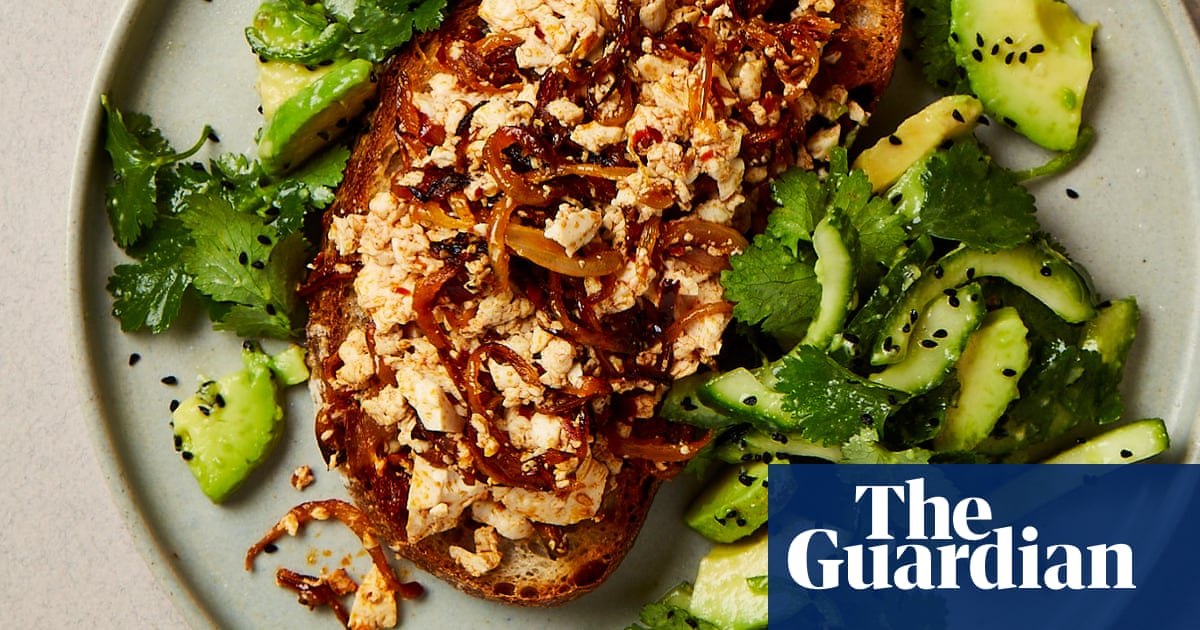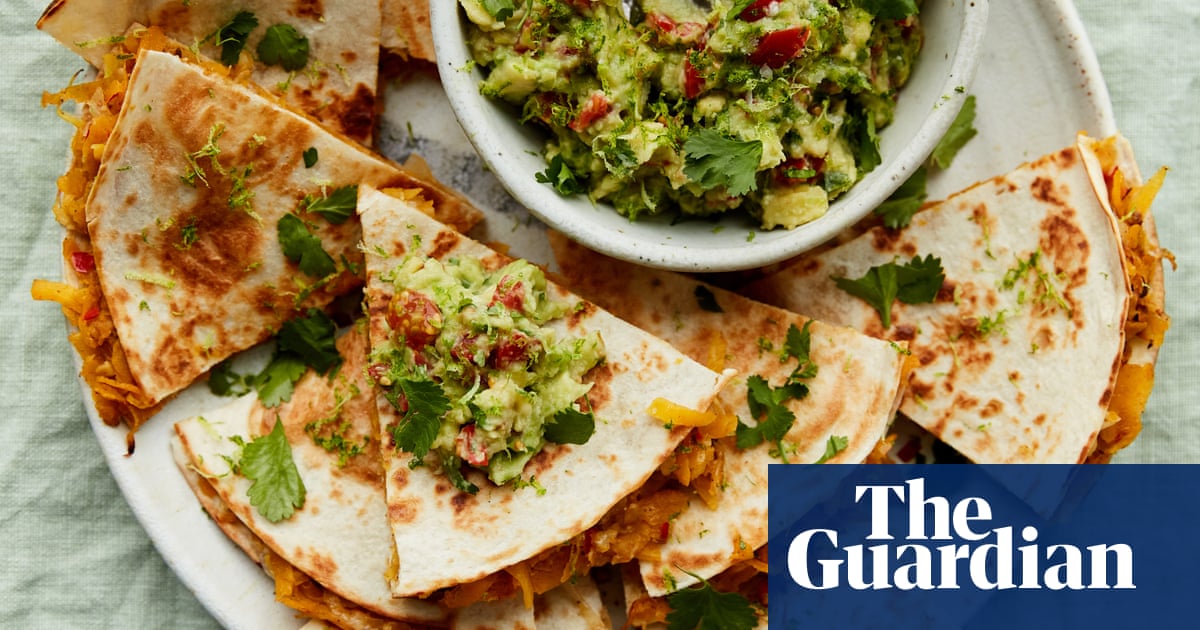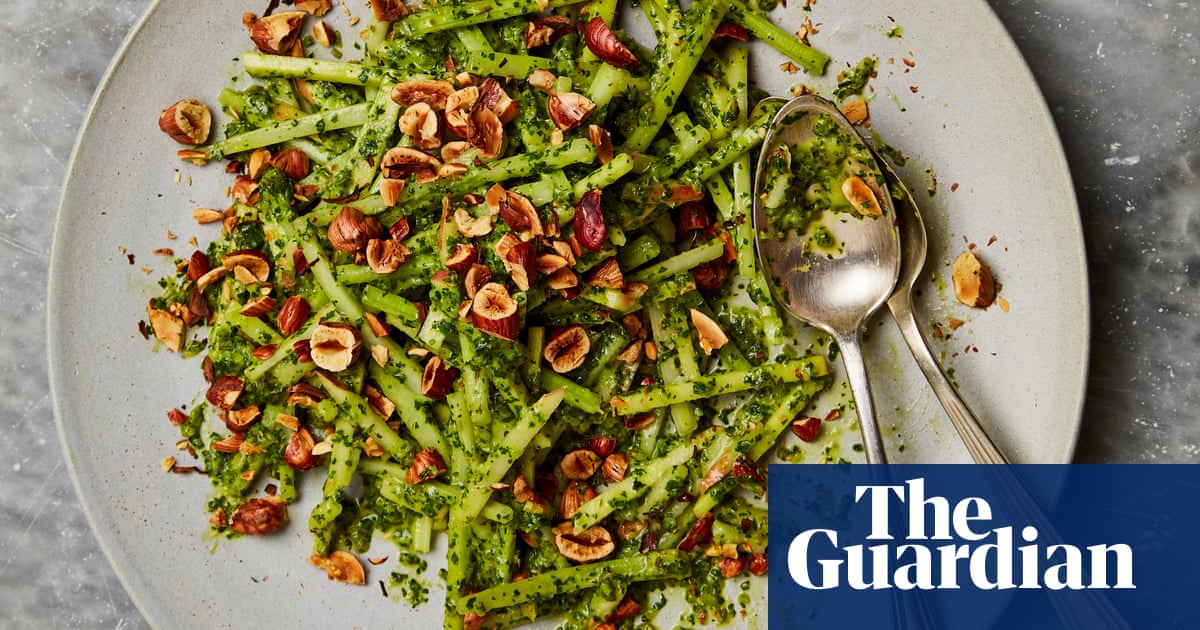
What are the best vegan proteins, and how should I use them?
Rachel, Sheffield
Protein remains the part of the plant-based diet that non-vegans seem most sceptical about, despite there being multiple good sources, from pulses, quinoa, chia seeds and nuts to tempeh, and even some veg, such as broccoli and sprouts. As Richard Makin, AKA the School Night Vegan, puts it, there are “three tiers” to consider: “You’ve got plants [legumes, beans, lentils], minorly processed things such as tofu and seitan, then really processed things such as plant-based meat substitutes.” I’m sure you’ve got the first tier covered, Rachel, and you need only visit the frozen aisle at the supermarket for tier three, so let’s look at the tofus, seitans and tempehs of this world – after all, they make for the interesting cooking.
For Max La Manna, author of You Can Cook This! (out in March), tofu is king: “There are all sorts of varieties, which cover everything from breakfast to pudding.” Firm tofu is “probably the easiest to work with”, says chef Alexis Gauthier, making it a good starting point. At his London restaurant 123V, Gauthier finely chops it “to create a ‘crab’ meat texture for maki rolls”. Makin, meanwhile, marinades shaved tofu in dark soy sauce and spices, then grills it for doner “meat”. La Manna’s go-to is butter “chicken”, which involves tossing torn, pressed tofu in olive oil and cornstarch, and baking it at 200C (180C fan)/390F/gas 6 for 15 minutes; for the sauce, he sautes onion, ginger and garlic in vegan butter, adds spices (garam masala, curry leaves, ground coriander, paprika), coconut milk and tomato paste, and simmers for 10 minutes. “Add the baked tofu for the last few minutes, toss and serve with rice.”
Silken tofu, as the name suggests, is more delicate and La Manna blends his for creamy sauces or desserts (think chocolate mousse). It’s also ideal for scrambles; the Guardian’s New Vegan columnist Meera Sodha writes: “[Its] mild personality makes it the perfect vehicle for louder Indian flavours.” And that’s the thing about tofu, it’s a blank canvas, so be bold with flavours you lavish upon it.
Then there’s tempeh, or fermented soybean cake. It’s wonderfully versatile and “has so much umami”, says Makin, who chops it into mince or breaks it up and fries for nuggets. La Manna marinates cubes of the stuff “in much the same way you would animal protein”, then bakes, roasts, fries or barbecues: “Tempeh can do it all.” That said, you’re more likely to find seitan at Makin’s (it’s made from wheat gluten, so not for the gluten-intolerant). “Once cooked, you get this fibrous, meaty replicant,” says Makin, who uses it where you might chicken – fajitas, perhaps. In terms of value for money, Makin says, “the best is that old favourite TVP [textured vegetable protein]”. It comes dehydrated and in varying shapes (mince, curls, chunks), so pop it in whatever liquid you fancy (for example, a flavourful broth), then treat it meatishly.
Perhaps the bigger question, though, should be what you’re seeking from your protein – are you looking to imitate meat, or are you simply in need of new ways with tofu? “There are as many opinions about vegan proteins as there are vegans,” says Makin. “Some have been without meat for so long that they can’t imagine something realistic being appealing.” Try embracing tofu, seitan and tempeh in their own right (plus those legumes, beans, grains etc), and moving away from this idea of meat being the poster child of our plates. Oh, and if you do go down the fake meat route, be mindful of how many (and what) ingredients they contain.












